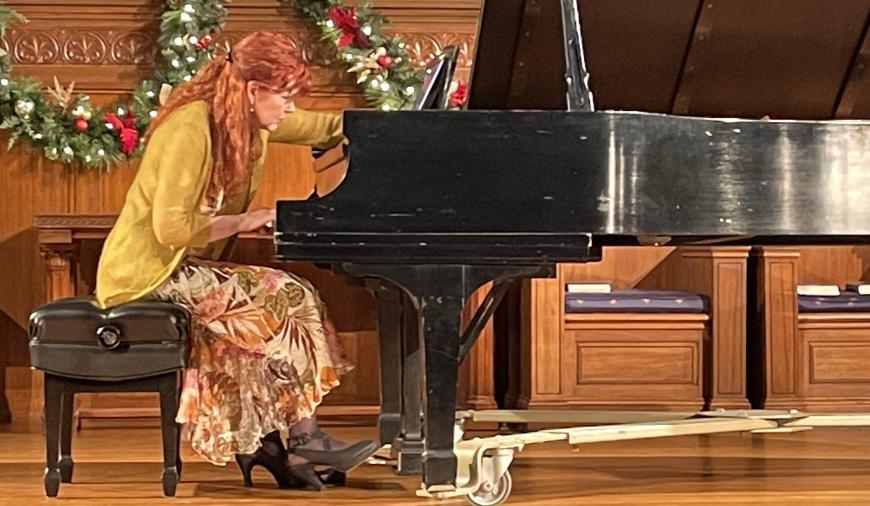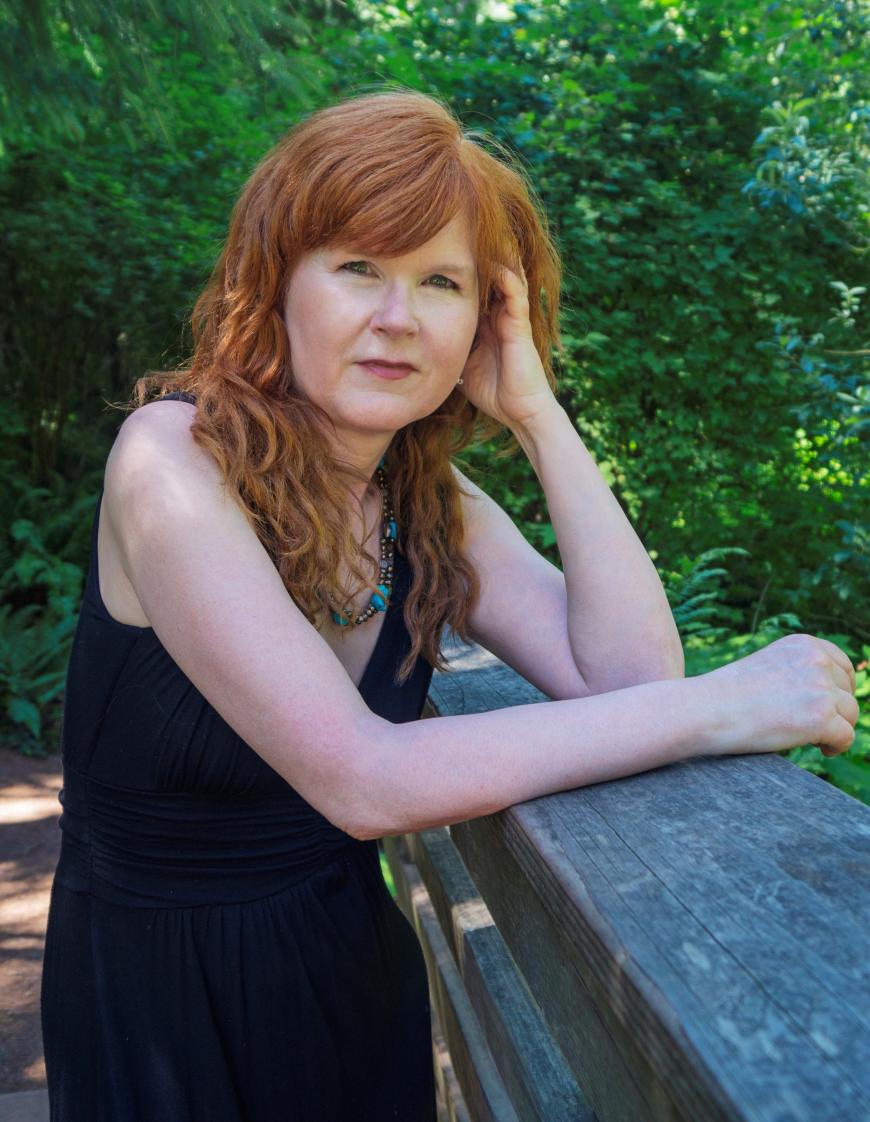
Unlike many of her past and current performances, the pianist Sarah Cahill’s Jan. 7 program at Old First Concerts didn’t have a title or stated theme. Nonetheless, in this shrewdly programmed concert, patterns emerged. The afternoon opened and closed with minimalist water-related works by the late Canadian composer Ann Southam (1937–2010), and these were adjacent to works from the early 20th century. In between came more minimalist or minimalist-adjacent pieces. All received probing, intimate performances from Cahill, who throughout her career has advocated for new and unusual music.
Southam’s Rivers Series 1 No. 1 (1979) and Commotion Creek (2007) are both extremely beautiful depictions of the motion of water, always varying and yet with a certain constancy. In Rivers Series 1 No. 1, the pianist’s right hand remains resolutely in the middle of the keyboard, playing slowly shifting harmonies in repeated rhythmic patterns while the left hand plays contrasting themes in the instrument’s low and high registers. Commotion Creek, which closed the program, does indeed make more of a commotion, with repeated patterns rushing along while the pianist brings individual notes and phrases out of the ongoing texture in an almost pointillistic manner.

Samuel Coleridge-Taylor’s Forest Scenes (1907) consists of five movements telling the love story of a forest maiden and a phantom lover. These charming vignettes are so forthrightly pictorial that they would be right at home accompanying a silent film. The piece opens, yes, in the forest, with the maiden all alone. When her lover comes on the scene, in the second movement, rocking triplets provide a constant sense of movement — very likely he’s on horseback — and there’s a real sense of arrival at the close of the movement.
“The Phantom Lover’s Tale of Longing” has a wistful, hymnlike quality and a good deal of decoration of the melodic line. By the fourth movement, it seems that the couple are discussing what might be possible between them, and the movement “Erstwhile They Ride, the Forest Maiden Acknowledges Her Love” had a spontaneous, improvisatory air in Cahill’s hands. The fifth movement, “Now Proudly They Journey Towards the Great City,” wraps up the cycle triumphantly.
Amy Beach’s more sophisticated “Hermit Thrush at Eve” (1921) sounds as if it was influenced by Claude Debussy and other French composers as well as by the song of the hermit thrush. Delicately traced melodies in the right hand hover over a darker accompaniment in the left, and in the middle of the work, a tune echoes itself, mimicking a dialogue Beach had with a hermit thrush while transcribing its song.
Ruth Crawford’s spare modernist Preludes 5, 6, and 9 (1925–1928) made a mighty stylistic contrast to the late-Romantic harmonies of Coleridge-Taylor. These are highly concentrated works that manage to traverse vast musical and emotional territories despite their brevity. The sinuous, dissonant theme of Prelude 5 encompasses much of the keyboard, conjuring up a looming sense of dread. In Prelude 6, a theme repeats with variations, starting in the upper register and eventually dying away in the middle of the keyboard. Prelude 9 begins and ends at the extremes of the instrument, with foreboding bass notes setting the tone.
Rounding out the program, and situated on opposite sides of intermission, were Terry Riley’s The Walrus in Memoriam (1991/1993) and Evan Ziporyn’s You Are Getting Sleepy (2015), the latter written for Cahill’s celebration of Riley’s 80th birthday and premiered by her at Old First Concerts. Ziporyn’s work is anything but soporific; its complex rhythmic phasing grabs your ear and doesn’t let go, and the piece becomes gradually more raucous as it progresses. Riley’s Walrus is a ragtime riff on the Beatles’ “I Am the Walrus,” and it manages to be both suave and puckish at the same time.



